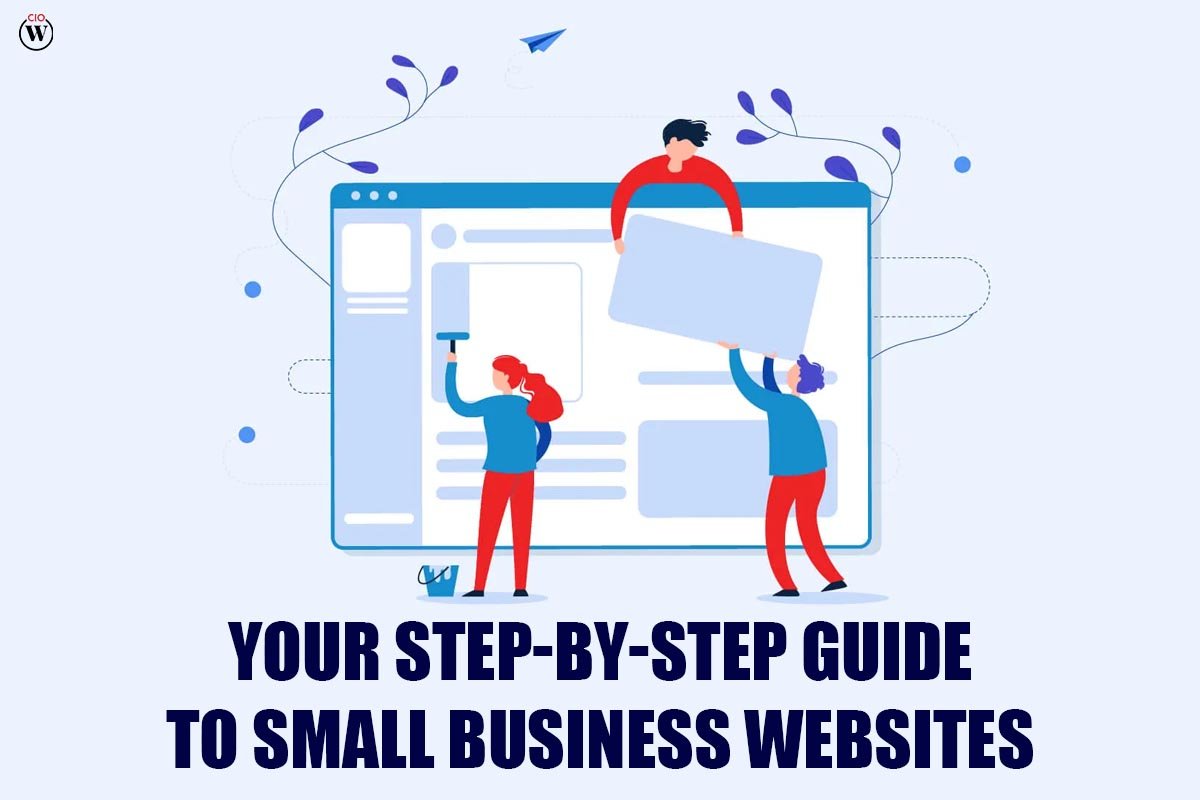To remain competitive and successful in today’s business environment, it is very necessary for even the smallest of enterprises to have their own website. A website may work as a virtual shop, providing prospective consumers with the opportunity to learn more about your company, goods, or services, as well as to make purchases or get in touch with you.
Guide To Small Business Websites may seem like an insurmountable challenge, but with the appropriate instruction, it can be a challenging but ultimately satisfying endeavor. With this comprehensive how-to manual, we will show you every step Guide To Small Business Websites for your startup or small company.
Here is a Step-By-Step Guide To Small Business Websites:
Step 1: Determine Your Website’s Purpose

It is essential that you ascertain the function of your website before you start the construction process. Will it be an e-commerce site, meaning that users will be able to make purchases of things online? Will it be more of an online brochure, including information about your company and the services you provide? Will it be in the form of a blog, in which you may share your knowledge and perspectives? The answers you provide to these questions will assist you in determining the sort of website you need, as well as the features and functionality that should be included in it.
Step 2: Choose a Domain Name
The domain name of your website serves as its address on the World Wide Web. It needs to be concise, easy to remember, and consistent with the name of your company or brand. You may buy a domain name through a domain registrar such as GoDaddy, Namecheap, or Bluehost. These are just a few examples. Be careful to choose a domain name for your company that isn’t already used and is still related to what you do.
Step 3: Choose a Hosting Platform for Your Website
There is a wide selection of website platforms available, each of which comes with its own set of benefits and drawbacks. Popular choices for Guide To Small Business Websites include WordPress, Squarespace, Wix, and Shopify. While choosing a platform, it is important to think about things like how easy it is to use, how many customization possibilities there are, and how much it costs.
Step 4: Choose a Website Template or Theme
The Guide To Small Business Websites platforms include a variety of templates or themes that may be modified to correspond with your company’s aesthetic and the function of your website. Choose a layout or concept for your company’s website that is aesthetically pleasing, simple to use, and congruent with the identity of your company.
Step 5: Customize Your Website

When you have decided on a layout for your website, also known as a template or theme, it is time to start customizing it. This entails adding the logo of your company, selecting your color scheme, and developing content like pages, blog entries, and product listings, among other things. Be sure to include essential details about your company’s Guide To Small Business Websites, such as its objectives, the products and services it offers, and its point of contact information.
Step 6: Add Essential Website Features
Your Guide To Small Business Websites needs to have important components like a contact form, a privacy policy, and a terms and conditions page. If you want to run an e-commerce business, you will need to equip your website with a shopping cart and the ability to handle payments. Be sure to include all of these characteristics in your website so that it is not just safe but also lawful and easy to use.
Step 7: Optimize Your Website for Search Engines
Search engine optimization, often known as SEO, refers to the practice of improving a website in order to get a better ranking on the pages that include search engine results. Because of this, prospective buyers may have an easier time locating your website. Researching keywords, using meta tags effectively, and producing high-quality content are all important aspects of SEO. Be careful to improve your website for search engine optimization so that you can get more visitors and prospective buyers.
Step 8: Test Your Website
When you release your website to the public, it is essential to test it to ensure that it functions well and is easy to use. Be careful to check the functionality of all of the links, forms, and other elements by testing them. You should also consider carrying out user testing in order to get input on the usability and design of the website.
Step 9: Launch Your Webpage
Launching your website is the next stage once you have finished all of the processes that came before it. This comprises bringing your website to live on the internet and advertising it via diverse marketing channels such as social media, email marketing, and others. Be sure to keep an eye on your website’s analytics to keep track of how well it is doing and to make adjustments as necessary.
Step 10: Maintain Your Website
Putting up an efficient online presence for your company begins with the creation of a website, but this is only the beginning of the process. On-going maintenance is required if you want to ensure that your website continues to function normally and features the most recent information.

This requires keeping the content of your website up to date, correcting any links that are broken, and ensuring that your website’s security elements are current. Your website’s search engine rating may also be improved by regularly updating it since search engines have a tendency to prefer websites that are updated often. Update your website regularly.
BOTTOM LINE
To summarize, Guide To Small Business Websites is an essential step in creating an online presence and competing in the digital marketplace of today. If you follow these steps, you will be able to develop a website that is professional, user-friendly, and reflective of the brand of your company, as well as one that satisfies the requirements of your clientele.
It is important to remember to keep your website up to date and to maintain it, as well as to employ digital marketing platforms in order to advertise your website and attract new clients. Your website for your small business has the potential to become an invaluable resource in the pursuit of your company’s objectives, provided you approach it strategically and get the appropriate direction.









